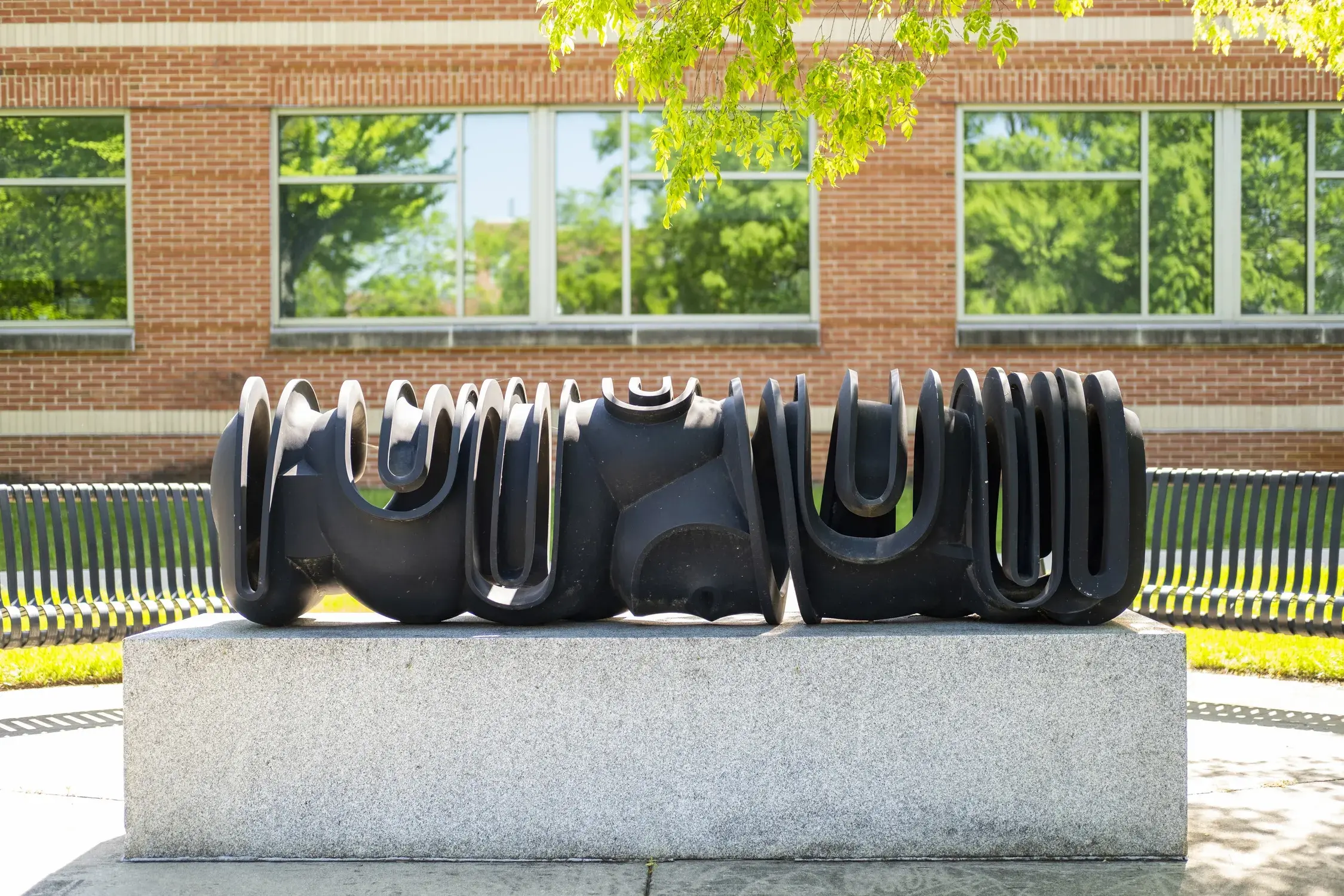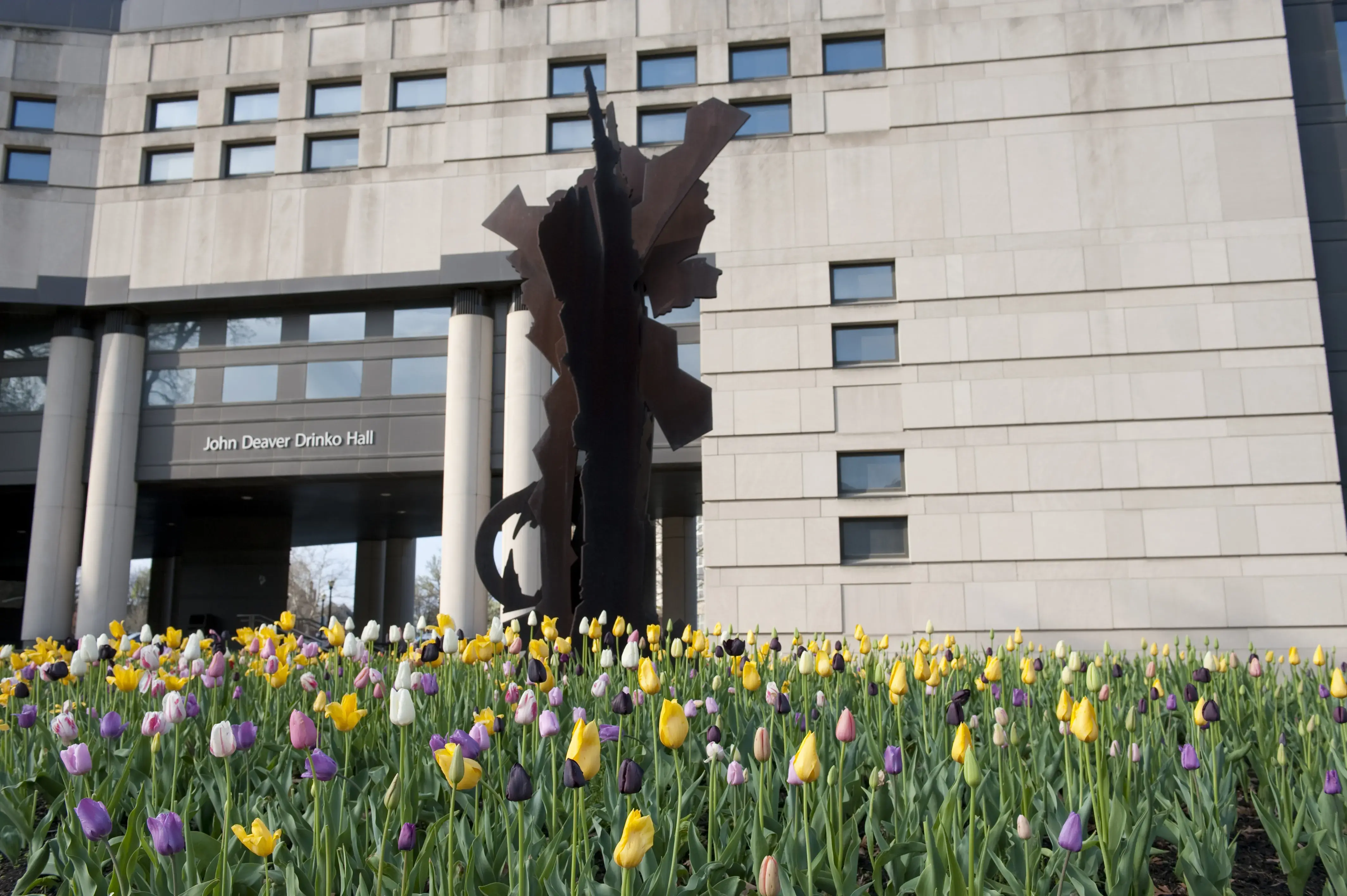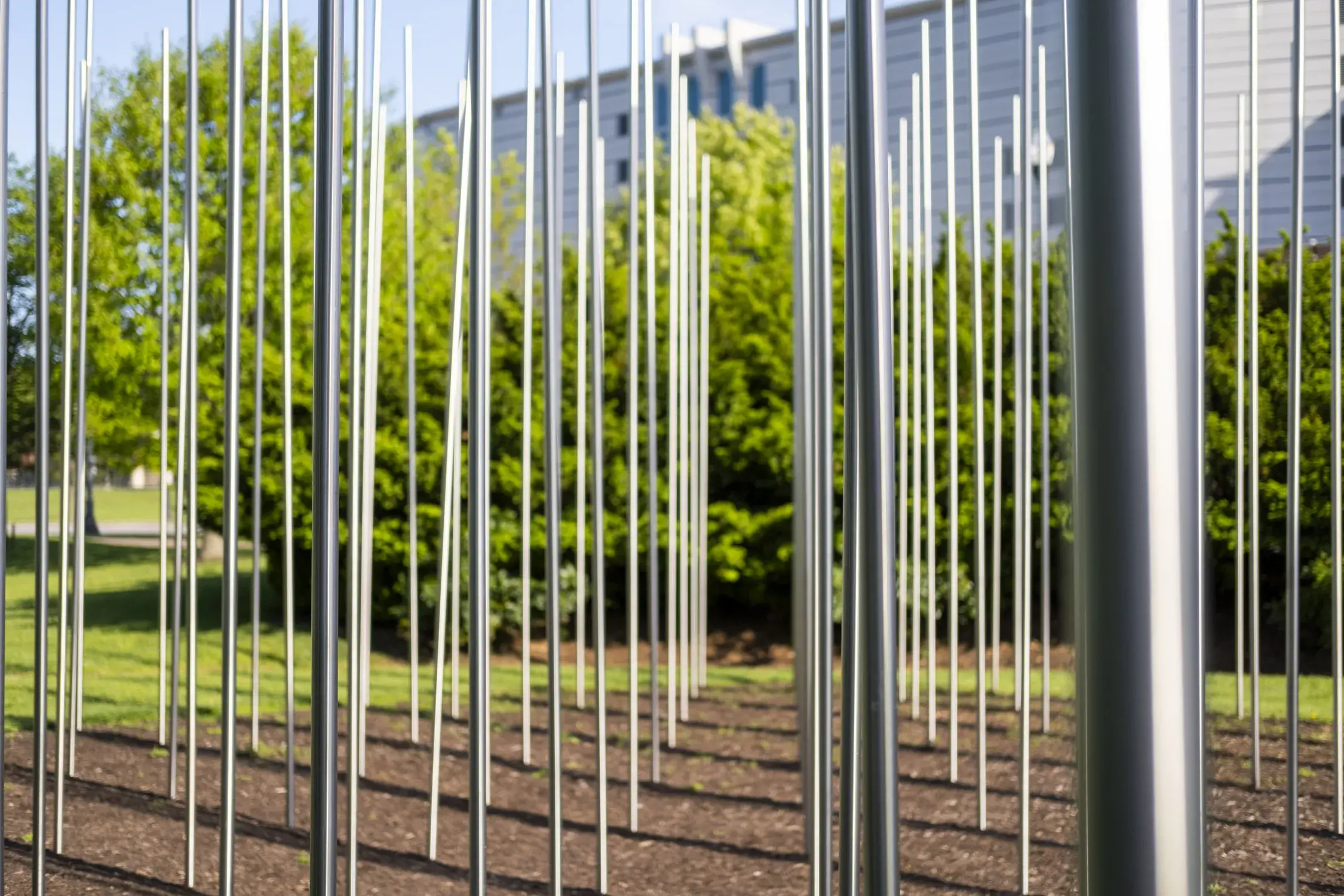
About the art
At first glance, Tony Cragg’s Rod, located outside Sisson Hall, is difficult to interpret. Cragg’s use of sturdy, industrial materials like bronze and steel creates a monumental work that appears almost fluid due to its composition from swirling, organic forms. The more than seven-foot-long bronze sculpture is highly abstract; it's hulking, uniformly dark gray form is intersected with deep parabolic cuts that lend it a sense of airiness despite it's immense weight.
While not a literal recreation of the double-helix structure, the tightly coiled, curvilinear bronze is nonetheless intended to evoke the intricately twisted form of a DNA molecule. Through this visual connection, Cragg uses Rod to ask profound questions about what DNA is, beyond its physical shape and chemical structure. The sculpture is sturdy and permanent, laid horizontally across a concrete plinth. The emphasis on durability attests to the role of DNA as a foundational compound for all life on Earth. However, the irregular incisions that break up the solid bronze mass challenge this idea of stability, imbuing the sculpture with a sense of movement in recognition that DNA is never perfectly static but subtly changing with each passing generation, giving rise to the beautiful diversity of life on Earth.
Collection of The Ohio State University. Funded through the Ohio Percent for Art program.
Material
Bronze
Location
Outside of Sisson Hall




About the Artist
Anglo-German sculptor Tony Cragg was elected to the British Royal Academy of Arts in 1994. Since the beginning of his career in the early 1970s, Cragg has been fascinated with the relationship between the natural world and the human-made industrial systems that exist alongside it. He is concerned not with the imitation of nature, but rather with why humans look the way we do and what makes us fundamentally emotional creatures. His fascination with the internal structure of materials helps inform not only the actual material’s physical appearance but also the way Cragg designs and creates his sculptures. The human form is the most advanced and complex example of this relationship, with a technically internal structure that has an outward organic form, evoking emotional responses. He currently lives and works in Wuppertal, Germany, and his work has been featured worldwide, including the Venice Biennale and São Paulo Biennial. Rod, on display outside Sisson Hall, highlights the contrast between physical and negative space, asking the viewer to consider their own connection to the material world and the space it exists within.


